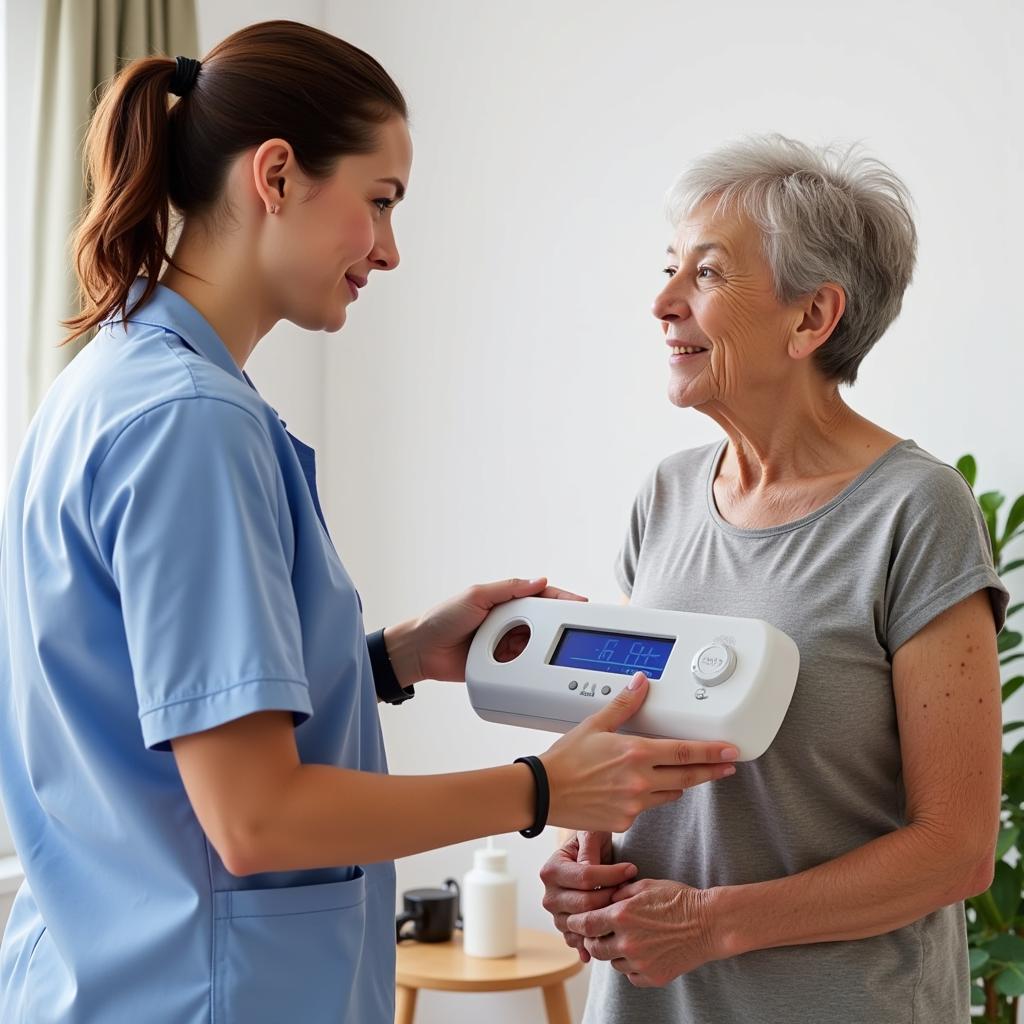Fall risk assessment is a crucial aspect of home care, especially for seniors. A fall can have devastating consequences, ranging from minor injuries to severe fractures and even death. Understanding how to assess and mitigate these risks is essential for providing safe and effective home care. This guide will explore the importance of fall risk assessment tools in home care, discuss various available tools, and provide practical tips for implementing them effectively.
One of the first steps in implementing a fall risk assessment tool is to understand the specific needs of the individual receiving care. This involves gathering information about their medical history, current medications, physical limitations, and cognitive status. A thorough assessment allows caregivers to identify potential hazards and develop personalized strategies to minimize fall risks. For instance, a health care home assessment tool can provide valuable insights into the individual’s overall health status and identify areas where support is needed. Shortly after the initial assessment, a schedule should be established for regular re-assessments. This is vital as an individual’s condition and risk factors can change over time. Regular monitoring ensures that the care plan remains relevant and effective in preventing falls.
Understanding Fall Risk Assessment Tools
Fall risk assessment tools provide a structured approach to evaluating an individual’s likelihood of falling. These tools typically involve a series of questions or observations related to factors that increase fall risk. These factors include balance problems, muscle weakness, medication side effects, environmental hazards, and cognitive impairment. By using a standardized tool, caregivers can obtain a more objective and comprehensive assessment of fall risk.
Several different fall risk assessment tools are available, each with its own strengths and limitations. Some commonly used tools include the Morse Fall Scale, the STRATIFY tool, and the Timed Up and Go test. Selecting the appropriate tool depends on the individual’s specific needs and the resources available. The chosen tool should be easy to administer, reliable, and valid for the target population.
Implementing Fall Risk Assessment Tools in Home Care
Implementing a fall risk assessment tool in home care involves several key steps. First, caregivers need to be trained on how to use the chosen tool properly. This includes understanding the scoring system and how to interpret the results. Once the assessment is complete, the caregiver should develop a personalized care plan to address the identified risks. This plan might include modifications to the home environment, such as removing tripping hazards and installing grab bars. It might also involve exercises to improve balance and strength, as well as medication management to minimize side effects. A health and safety audit tool for care homes can be used to ensure a safe environment for the elderly.
Regularly reviewing and updating the fall risk assessment and care plan is essential to ensure ongoing effectiveness. This is particularly important if the individual experiences a change in health status or medication. In some cases, it may be necessary to consult with a healthcare professional for further evaluation and guidance.
Choosing the Right Fall Risk Assessment Tool
Selecting the appropriate fall risk assessment tool is crucial for accurate assessment and effective fall prevention. Several factors should be considered, including the individual’s cognitive status, mobility level, and overall health condition. The tool should also be easy to use and interpret by caregivers. Some assessments, such as the safer nursing care tool nice, can be particularly helpful in certain situations.
 Physiotherapist Assessing Elderly Patient’s Balance
Physiotherapist Assessing Elderly Patient’s Balance
“Choosing the right fall risk assessment tool is like selecting the right diagnostic tool for a car,” says John Smith, Certified Geriatric Care Manager. “You need to understand the specific problem you are trying to address and choose the tool that will give you the most accurate information.” This ensures that the chosen assessment provides relevant and actionable information.
Conclusion
Fall risk assessment is a critical component of home care, particularly for older adults. By utilizing appropriate fall risk assessment tools, caregivers can proactively identify and mitigate potential hazards, promoting a safer and more secure environment for those receiving care. Regular assessments and personalized care plans are essential for reducing fall risk and improving overall well-being. Remember, a proactive approach to fall prevention is key to maintaining independence and quality of life.
FAQ
- What are the common causes of falls in the elderly?
- How often should a fall risk assessment be conducted?
- What are some examples of home modifications to prevent falls?
- How can medications contribute to fall risk?
- What are the benefits of using a standardized fall risk assessment tool?
- What should I do if a fall occurs despite preventative measures?
- Where can I find reliable fall risk assessment tools?
Scenarios
Scenario 1: An elderly individual living alone starts experiencing dizziness and unsteadiness. A fall risk assessment would be crucial to identify the underlying causes and implement preventative measures.
Scenario 2: After a recent hip fracture, an individual returns home and requires assistance with daily activities. A fall risk assessment can help adapt the home environment and establish a safe care plan.
Scenario 3: An individual with dementia experiences confusion and wandering, increasing their fall risk. A fall risk assessment can help tailor interventions to address their specific cognitive and behavioral challenges.
Further Questions & Resources:
You might also be interested in learning about specific fall prevention strategies or exploring other home safety assessments. Visit our website for additional information and resources related to home care.
Contact Us:
Need assistance? Contact us via WhatsApp: +1(641)206-8880, Email: [email protected] or visit us at 910 Cedar Lane, Chicago, IL 60605, USA. Our 24/7 customer support team is ready to help.

Leave a Reply